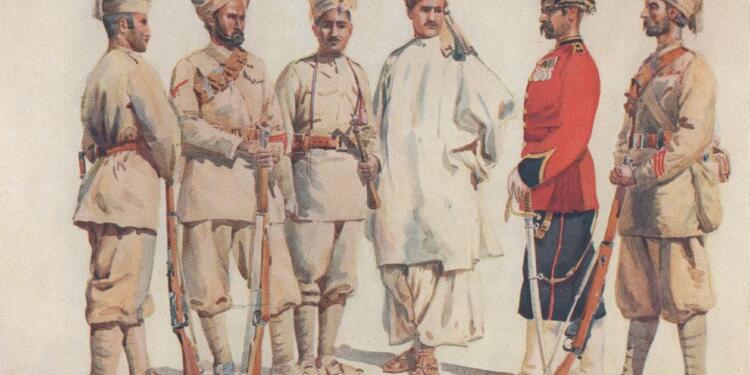The armies of the British East India Company, mostly composed of Indian soldiers, consistently won against the more numerous and better-equipped armies of Indian rulers. With the help of these Indian soldiers, the British East India Company was able to conquer and rule India for almost two centuries. But how and why did this happen? Why did a smaller Indian army win against larger Indian armies, and why did Indians decide to join the British army?
The remarkable success of the British East India Company in vanquishing Indian rulers’ armies, despite relying heavily on local soldiers, stems from a complex interplay of factors. This historical phenomenon, which shaped India’s colonisation, warrants thorough examination.
Clever Diplomacy
The Company’s diplomatic prowess was a cornerstone of its success. By forging strategic alliances with select regional rulers, they effectively employed a divide-and-rule tactic. This approach not only weakened potential opposition but also secured local support and resources. A prime example was the alliance formed against Tipu Sultan, which isolated a formidable adversary.
Technological Edge
Superior technology played a pivotal role in the Company’s military victories. British forces wielded advanced weapons, including muskets and cannons, often outclassing their Indian counterparts. This technological advantage translated into greater firepower and tactical flexibility on the battlefield.
Organisational Finesse
The British forces’ organisational structure and discipline stood in stark contrast to many Indian armies of the time. The Company’s military was well-trained, highly organised, and adhered to strict discipline. This level of professionalism gave them a significant edge over less structured forces.
Monetary Muscle
Financial resources were another crucial factor. As a wealthy trading enterprise backed by British investors, the East India Company had access to substantial funds. This allowed them to maintain a well-equipped standing army and engage in strategic bribery of local authorities.
Maritime Mastery
Control of the seas provided the British with a strategic advantage in logistics and mobility. The Company’s naval supremacy allowed for efficient transportation of troops, supplies, and reinforcements. This maritime edge contrasted sharply with the land-based logistics of Indian rulers.
Centralised Command
The Company’s unified and centralised command structure ensured coherent strategy and effective coordination of military operations across the subcontinent. This centralisation stood in contrast to the often fragmented command structures of various Indian states.
A Proper Army
Another significant advantage was the permanent nature of the Company’s army. Unlike many Indian rulers who relied on seasonal soldiers, the British maintained a standing professional force. This allowed for continuous training and the development of experienced veterans.
External Bolstering
Support from the British Crown and Parliament strengthened the Company’s war efforts, providing additional resources and political backing when needed. This support became even more pronounced after the Indian Rebellion of 1857.
Brilliant Leadership
Leadership quality was also a decisive factor. The British forces were led by capable generals whose strategic acumen and battlefield experience contributed significantly to their victories.
Disunity Among Opponents
The lack of unity among Indian powers was a critical weakness that the British expertly exploited. Internal rivalries prevented the formation of a united front against the expanding British presence.
Limited Modernisation
Lastly, the limitations of military modernisation attempts by Indian states played a role in their ultimate defeat. While some rulers made efforts to update their armies, these programs often fell short due to limited resources and resistance from traditional military elites.
In conclusion, the British East India Company’s military successes in India resulted from a combination of technological, organisational, financial, and strategic advantages. These factors, coupled with effective exploitation of local political divisions, allowed a trading company to gradually transform into a dominant colonial power, fundamentally altering the course of Indian history.
ALSO READ: The British came to India initially only to trade, but how did they end up ruling India?


































